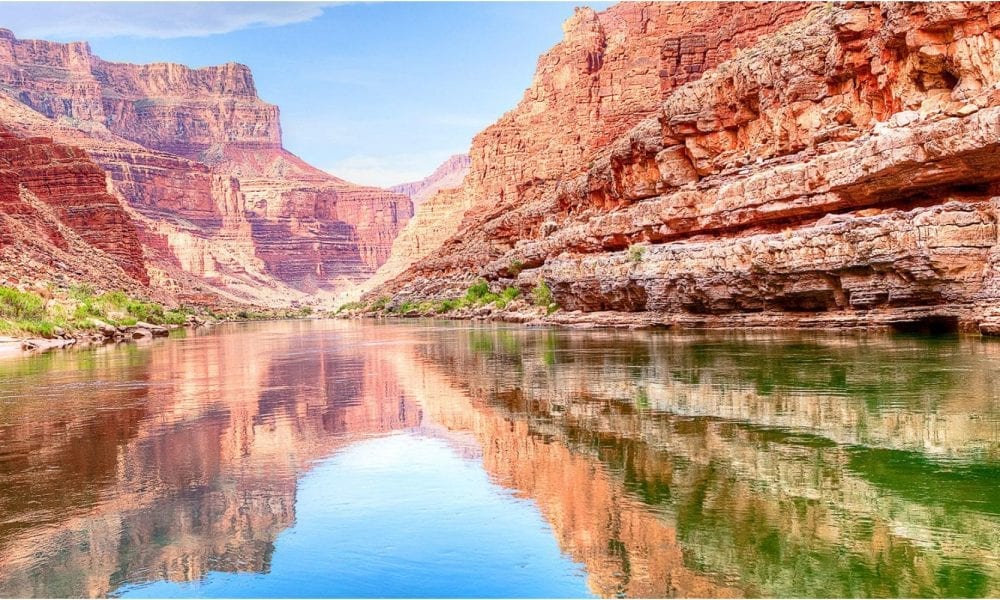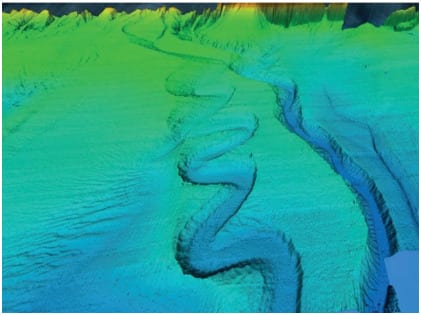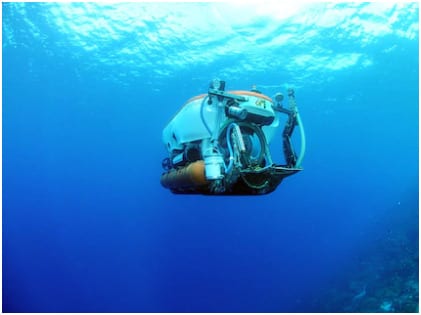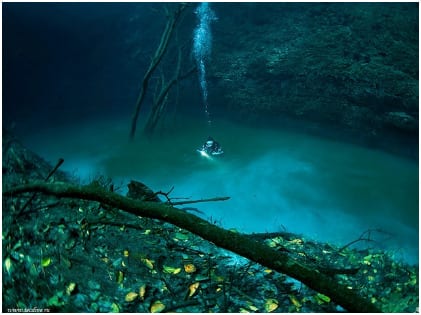
What Rivers Have Been Hiding – And How Amazing It Truly Is!

There is a river that cascades around towers of monstrous, towering rock, in a deep gorge. This river winds across a vast plain and features torrents with a force that rivals that of the Colorado River which has been known to have carved the Great Grand Canyon. However, this river isn’t featured on a map, nor does it appear in pictures taken by tourists. This is because it’s a river that happens to flow 3.2 miles below the surface of the vast Pacific Ocean.
 This undersea river is responsible for the shaping of the Monterey Canyon over millions of years. The water travels out of the mouth of the Canyon and into a valley cut through the seabed that actually extends for almost 200 miles before it spills into the deep sea. This channel is not the only of its kind. There are many similar channels that have been etched into seabeds across the globe, some discovered, and still more waiting to be discovered. Channels have been uncovered off the coast of the Amazon, Greenland, Bengal and the Congo. The largest channels reach several miles across and run for still more thousands of miles into the depths of the ocean. The channels are a source of vital sustenance to marine creatures. As incredible as they are, undersea rivers happen to be one of the least understood natural phenomena in the world.
This undersea river is responsible for the shaping of the Monterey Canyon over millions of years. The water travels out of the mouth of the Canyon and into a valley cut through the seabed that actually extends for almost 200 miles before it spills into the deep sea. This channel is not the only of its kind. There are many similar channels that have been etched into seabeds across the globe, some discovered, and still more waiting to be discovered. Channels have been uncovered off the coast of the Amazon, Greenland, Bengal and the Congo. The largest channels reach several miles across and run for still more thousands of miles into the depths of the ocean. The channels are a source of vital sustenance to marine creatures. As incredible as they are, undersea rivers happen to be one of the least understood natural phenomena in the world.
The rivers hidden beneath the surface of the oceans are much like the rivers we see on land, complete with banks and smaller tributaries that feed the larger rivers. They flow and carve the surface of the seafloor and follow meandering paths, change course and even result in abandoned sections as we see occurring on land.
These undersea rivers came to light when sonar mapping of the sea bed was done in the 1980s, which revealed them. It was after the 1990s that some knowledge on how the channels formed was gleaned after scientists invested time and energy in investigating the channels. They drilled into the sediments of the seabed and found through careful inspection of the sediment cores that the channels have formed through repeated deposits of sediment that spilled down the channels. This shed light on the fact that the rivers beneath the surface of the ocean were actually rivers of silt and sand rather than freshwater as on the land.
 Studying these channels have proven to be difficult given the fact that they travel at extreme depth, up to 2.5 miles. Depths of this nature require highly specialized marine equipment that is remote controlled. Even them, the rivers flow some of the time, not continuously.
Studying these channels have proven to be difficult given the fact that they travel at extreme depth, up to 2.5 miles. Depths of this nature require highly specialized marine equipment that is remote controlled. Even them, the rivers flow some of the time, not continuously.
So far, the rivers we have discussed do not have much life around them owing to the intense cold and pressure, and certainly no plant life, but an amazing discovery beneath the surface of the Black Sea revealed an underwater river complete with trees, waterfalls and plenty of vegetation. The volume of water flowing through this incredible discovery is approximately 350 times larger than that of the River Thames and roughly 10 times that of the Rhine, which is Europes largest river.
The finding is a source of information on how there are forms of life that cope with surviving in such depths of the oceans. So far from the nutrient-rich waters that circulate close to land. The river is approximated at 115 feet deep at its deepest and has the terrestrial features like rapids and waterfalls, which were found through robotic submarines. The water is far denser than the surrounding water as it is highly saline and contains a lot of sediment.
This channel has led scientists to believe that they may serve an important role in the delivery of nutrients to the ocean, much like arteries for the ocean. Another key difference and an interesting difference between the underwater rivers and those on land is that the water spirals in the opposite direction when compared to the spirals of the water in rivers on land.
 The river beneath the surface of the sea surrounding Mexico has been called ‘Cenote Angelita’ and was discovered by a group of divers, and specifically by Anatoly Beloshchin.
The river beneath the surface of the sea surrounding Mexico has been called ‘Cenote Angelita’ and was discovered by a group of divers, and specifically by Anatoly Beloshchin.
It is expected that many more rivers like these will be found in the near future. And we can’t wait to see the results.
More in Entertainment
-
`
Curious About Travis Kelce’s Net Worth? Here’s the Scoop!
Travis Kelce’s name echoes through NFL stadiums, synonymous with athletic prowess and electrifying plays. But beyond his touchdown celebrations and record-breaking...
June 10, 2024 -
`
Everything You Need to Know About an Assumable Mortgage
What is an Assumable Mortgage? Whether you are a buyer or a seller, understanding the concept of assumable mortgages can open...
June 6, 2024 -
`
Layoff vs. Fired – Understanding the Crucial Differences
When it comes to job loss, understanding the distinction between being layoff vs. fired is crucial. While both situations result in...
May 30, 2024 -
`
When Are Business Taxes Due 2024? Essential Dates and Deadlines
Tax deadlines can be daunting, but fear not! Let’s break down everything you need to know to stay on top of...
May 22, 2024 -
`
How Much Does Jeff Bezos Make Per Hour? It’s More Than You Think!
Jeff Bezos, a name synonymous with innovation and wealth, stands as one of the world’s richest individuals. While Bernard Arnault and...
May 16, 2024 -
`
What is Portfolio Investment Entity (PIE) and How Can it Benefit You?
In the intricate world of finance, individuals seek avenues to optimize their investments while minimizing risks. One such avenue gaining traction...
May 9, 2024 -
`
What is a Bank Statement? Understanding its Definitions, Benefits, and Prerequisites
Ever wondered where your money goes? A bank statement is like a financial report card, giving you a clear picture of...
April 30, 2024 -
`
Branded Content: A Genuine Way to Connect With Your Audience
Have you ever binge-watched a series on Netflix, only to later realize that the beverage everyone’s sipping on is that brand...
April 23, 2024 -
`
What Car Does Jeff Bezos Drive? Find Out Inside His Exclusive $20 Million Collection
Have you ever wondered what car does Jeff Bezos drive? This man’s tastes in vehicles are as expansive as his business...
April 17, 2024















You must be logged in to post a comment Login